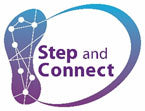
Let’s collaborate to help connect the dots on the complexity of balance.
Balance Educational Handouts:
Free Introductory Handouts – Step and Connect
Reliable resources, articles, books and associations are listed as a reference promoting exercise and balance.
Falls prevention for the older adult
Check your risk for falling
Home Safety Tips
Balance, Dizziness and Vertigo
Walking Resources:
Apps
National and Local Organizations:
Parkinson’s Disease
Brain Injury
Multiple Sclerosis
Amputee
Oncology
Below are some of our favorite research articles that relate to our current assessment and treatment philosophy regarding multisensory feedback and Balance Matters.
Podcasts:
NPR- Hidden Brain - When Everything Clicks: The Power Of Judgment-Free Learning
Research Citations:
The full article: ‘Use of real-time multimodal sensory feedback home program improved backward stride and retention for people with Parkinson Disease: A Pilot Study’ recently published in the Clinical Parkinsonism & Related Disorders journal is available to download here.
Avanzino L, Pelosin E, Vicario CM, Lagravinese G, Abbruzzese G, Martino D. Time Processing and Motor Control in Movement Disorders. Front Hum Neurosci. 2016;10:631. Published 2016 Dec 12. doi:10.3389/fnhum.2016.00631
Baram Y, Aharon-Peretz J, Badarny S, Susel Z, Schlesinger I. Closed-loop auditory feedback for the improvement of gait in patients with Parkinson's disease. J Neurol Sci. 2016 Apr 15;363:104-6. doi: 10.1016/j.jns.2016.02.021. Epub 2016 Feb 10.
Baram Y1, Miller A. Auditory feedback control for improvement of gait in patients with Multiple Sclerosis. J Neurol Sci. 2007 Mar 15;254(1-2):90-4. Epub 2007 Feb 20.
Cha, Yong-Jun & Kim, Jung-Doo & Choi, Yu-Ran & Kim, Nan-Hyang & Son, Sung Min. (2018). Effects of gait training with auditory feedback on walking and balancing ability in adults after hemiplegic stroke: A preliminary, randomized, controlled study. International Journal of Rehabilitation Research. 41. 1. 10.1097/
Chiviacowsky, S., & Wulf, G. (2007). Feedback after good trials enhances learning. Research Quarterly for Exercise and Sport, 78, 40–47
Dozza M, Horak FB, Chiari Auditory biofeedback substitutes for loss of sensory information in maintaining stance.Exp Brain Res. 2007 Mar; 178(1):37-48.
Ghai S. Effects of Real-Time (Sonification) and Rhythmic Auditory Stimuli on Recovering Arm Function Post Stroke: A Systematic Review and Meta-Analysis. Front Neurol. 2018;9:488. Published 2018 Jul 13. doi:10.3389/fneur.2018.00488
Guadagnoli, M. A., & Lee, T. D. (2004). Challenge point: A framework for conceptualizing the effects of various practice conditions in motor learning. Journal of Motor Behavior, 36(2), 212–224.
Horak, F. B. (2009). Postural compensation for vestibular loss. In Annals of the New York Academy of Sciences (Vol. 1164, pp. 76-81). (Annals of the New York Academy of Sciences; Vol. 1164
Huang, H., Wolf, S. L., & He, J. (2006). Recent developments in biofeedback for neuromotor rehabilitation. Journal of Neuroengineering and Rehabilitation, 3(1), 1–12.
Kleim JA, Jones TA. Principles of experience-dependent neural plasticity: implications for rehabilitation after brain damage. Journal of speech, language, and hearing research. 2008;51(1):S225-39
Molier, B., Van Asseldonk, E., Hermens, H., & Jannink, M. (2010). Nature, timing, frequency and type of augmented feedback; does it influence motor relearning of the hemiparetic arm after stroke? A systematic review. Disability and Rehabilitation, 32(22), 1799–1809.
Park JH, Chung Y. The effects of providing visual feedback and auditory stimulation using a robotic device on balance and gait abilities in persons with stroke: a pilot study. Physical Therapy Rehabilitation Science. 2016;5(3):125-131. doi:10.14474/ptrs.2016.5.3.125
Pitale JT, Bolte JH. A heel-strike real-time auditory feedback device to promote motor learning in children who have cerebral palsy: a pilot study to test device accuracy and feasibility to use a music and dance-based learning paradigm. Pilot and Feasibility Studies. 2018;4:42
Posada-Gómez R1, Montaño-Murillo RA, Martínez-Sibaja A, Alor-Hernández G, Aguilar-Lasserre AA, Reyes-Fernández MC. An Interactive System for Fine Motor Rehabilitation. Rehabil Nurs. 2018 Mar/Apr;43(2):116-124Ranganathan, R., & Newell, K. M. (2009). Influence of augmented feedback on coordination strategies. Journal of Motor Behavior, 41(4), 317–330
Ribeiro, D. C., Sole, G., Abbott, J. H., & Milosavljevic, S. (2011). Extrinsic feedback and management of low back pain: A critical review of the literature. Manual Therapy, 16(3), 231–239.
Ronsse, R., Puttemans, V., Coxon, J. P., Goble, D. J., Wagemans, J., Wenderoth, N., & Swinnen, S. P. (2011b). Motor learning with augmented feedback: Modality-dependent behavioral and neural consequences. Cerebral Cortex, 21(6), 1283–1294.
Schaffert N, Janzen TB, Mattes K, Thaut MH. A Review on the Relationship Between Sound and Movement in Sports and Rehabilitation. Front Psychol. 2019;10:244. Published 2019 Feb 12. doi:10.3389/fpsyg.2019.00244
Schenck C, Kesar TM. Effects of unilateral real-time biofeedback on propulsive forces during gait. Journal of NeuroEngineering and Rehabilitation. 2017;14:52
Schmitz G, Bergmann J, Effenberg AO, Krewer C, Hwang TH, Müller F. Movement Sonification in Stroke Rehabilitation. Front Neurol. 2018;9:389. Published 2018 Jun 1. doi:10.3389/fneur.2018.00389
Shea, C. H., & Wulf, G. (1999). Enhancing motor learning through external-focus instructions and feedback. Human Movement Science, 18(4), 553–571
Shull PB, Damian DD. Haptic wearables as sensory replacement, sensory augmentation and trainer – a review. Journal of NeuroEngineering and Rehabilitation. 2015;12:59. doi:10.1186/s12984-015-0055-z.
Sigrist, R., Rauter, G., Riener, R. et al. Augmented visual, auditory, haptic, and multimodal feedback in motor learning: A review. Psychon Bull Rev (2013) 20: 21
Snodgrass, S. J., Rivett, D. A., Robertson, V. J., & Stojanovski, E. (2010). Real-time feedback improves accuracy of manually applied forces during cervical spine mobilisation. Manual Therapy, 15, 19–25.
Tzetzis, G., Votsis, E., & Kourtessis, T. (2008). The effect of different corrective feedback methods on the outcome and self confidence of young athletes. Journal of Sports Science and Medicine, 7, 371–378.
Van Vugt FT1, Tillmann B2. Auditory feedback in error-based learning of motor regularity. Brain Res. 2015 May 5;1606:54-67. doi: 10.1016/j.brainres.2015.02.026. Epub 2015 Feb 23.

